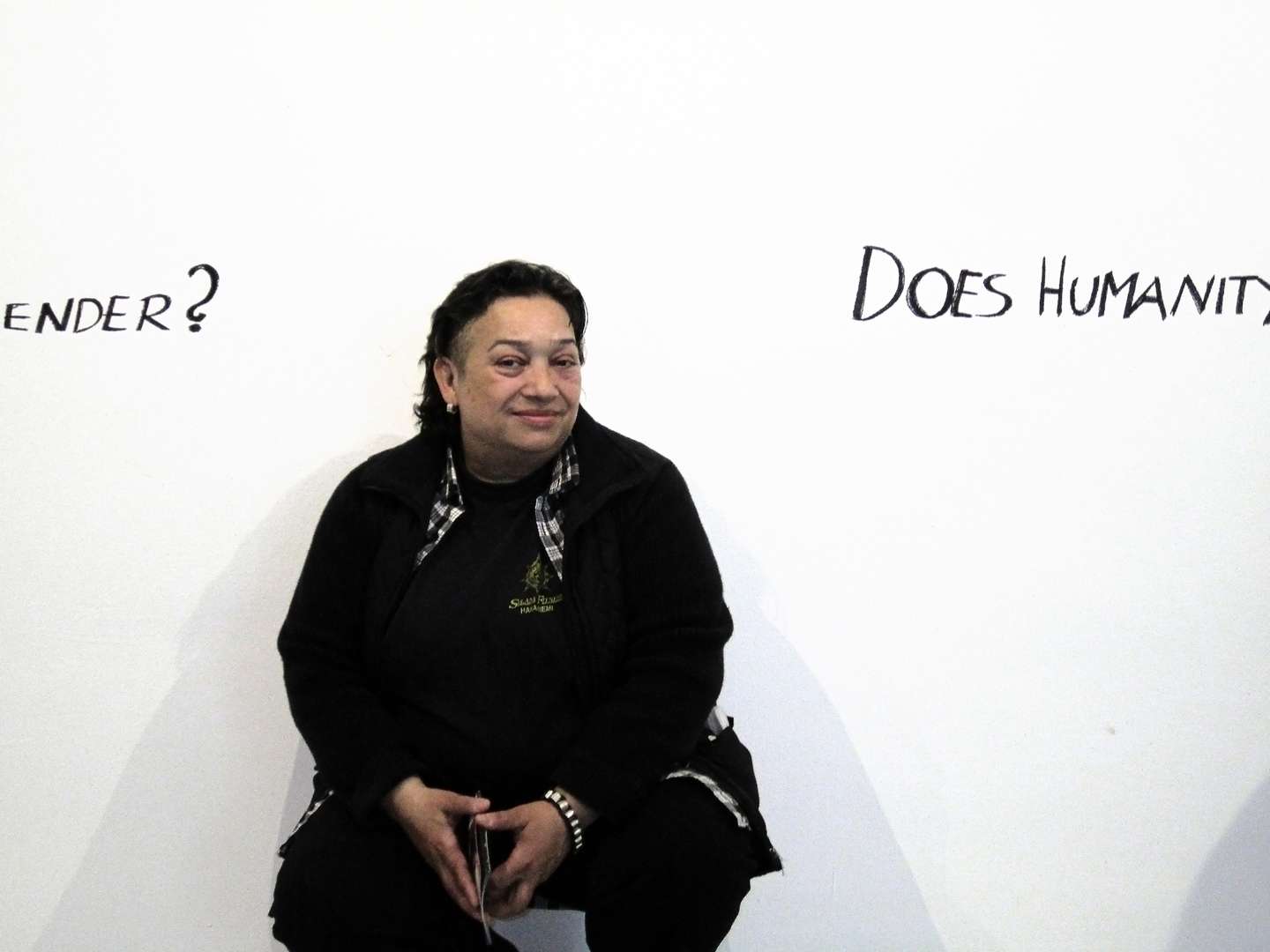Kiba (Kirsti Leila Annikki) Lumberg, who lives in Helsinki, is one of the most visible and versatile Romani artists and activists in Finland. Her work as an artist encompasses visual art, performance, installation and video art; she is also a writer and a comic artist.
Artist Kiba Lumberg: defender of human rights, dignity and equality
Lumberg was born in Lappeenranta in a Finnish Kaale family (Kaale is the self-denomination of Finnish Roma). She ran away from her childhood home at the age of thirteen, refusing to put up with Romani women’s roles. Much of her work has been inspired by her childhood and early youth. Lumberg studied art, design and music in Finland and abroad. In her works, she criticises direct and indirect forms of discrimination of Roma in Finnish society, but she is also a kind of ‘internal critic’, having criticised the Roma community from within, especially the subjugation of women and discrimination against otherness (e. g. LGBT) in the name of maintaining Romani traditions.

The issue of multiple marginalisation appears as a theme in one form or other in all of Lumberg’s works. Following her screenplay for a television mini-series ‘Tumma ja hehkuva veri’ [Dark and Glowing Blood], 1997, which was the Finnish entry for the Prix Italia 1998 and was also reworked into a theatre play, and some appearances on TV, she received harsh criticism and threats from some members of the Finnish Romani community.
In the first decade of the twenty-first century, she published three semi-autobiographical novels: Musta perhonen [The Black Butterfly] (2004), Repaleiset siivet [Tattered Wings] (2006) and Samettioyö [The Velvet Night] (2008), later compiled into one volume as Memesa-trilogia [Memesa Trilogy] (2011). The novels follow the heroine from her early childhood into adulthood. They manifest generic features of literature for girls, but also of a feminist type; a lesbian/queer Bildungsroman, a female Künstlerroman (artist’s novel), auto-fiction and feminist ethno-autobiography.
Lumberg has published two comic books (Gipsy comix! and Hullun taiteilijan päiväkirja [Diary of a Mad Artist], both in 2010, in her Aurinkogalleria, an art gallery, publishing house and a place to meet and discuss and promote alternative forms of art. Lumberg has authored several video works (e. g. Gräi-Hevonen [Horse], 1990) and she has staged various socially committed performances, courses, workshops and art exhibitions in Finland and abroad, sometimes in the role of exhibition curator and producer as, for example, in an international exhibition of contemporary art by Romani women. Notable is her participation in the Venice Biennale: at the first Roma Pavilion in 2007 and at the Roma Pavilion project “Call the Witness” in 2011.
In her art and activism, which includes the founding of the art group Tulikaste and standing as a candidate in the 2007 Finnish parliamentary elections on behalf of the Left Alliance, she combines a critical view of all social groups with campaigning for human rights and environmental protection as well as equality and social justice inside and outside her own community.
Rights held by: Viola Parente-Čapkova | Licensed by: Viola Parente-Čapkova | Licensed under: CC-BY-NC 3.0 Germany | Provided by: RomArchive



